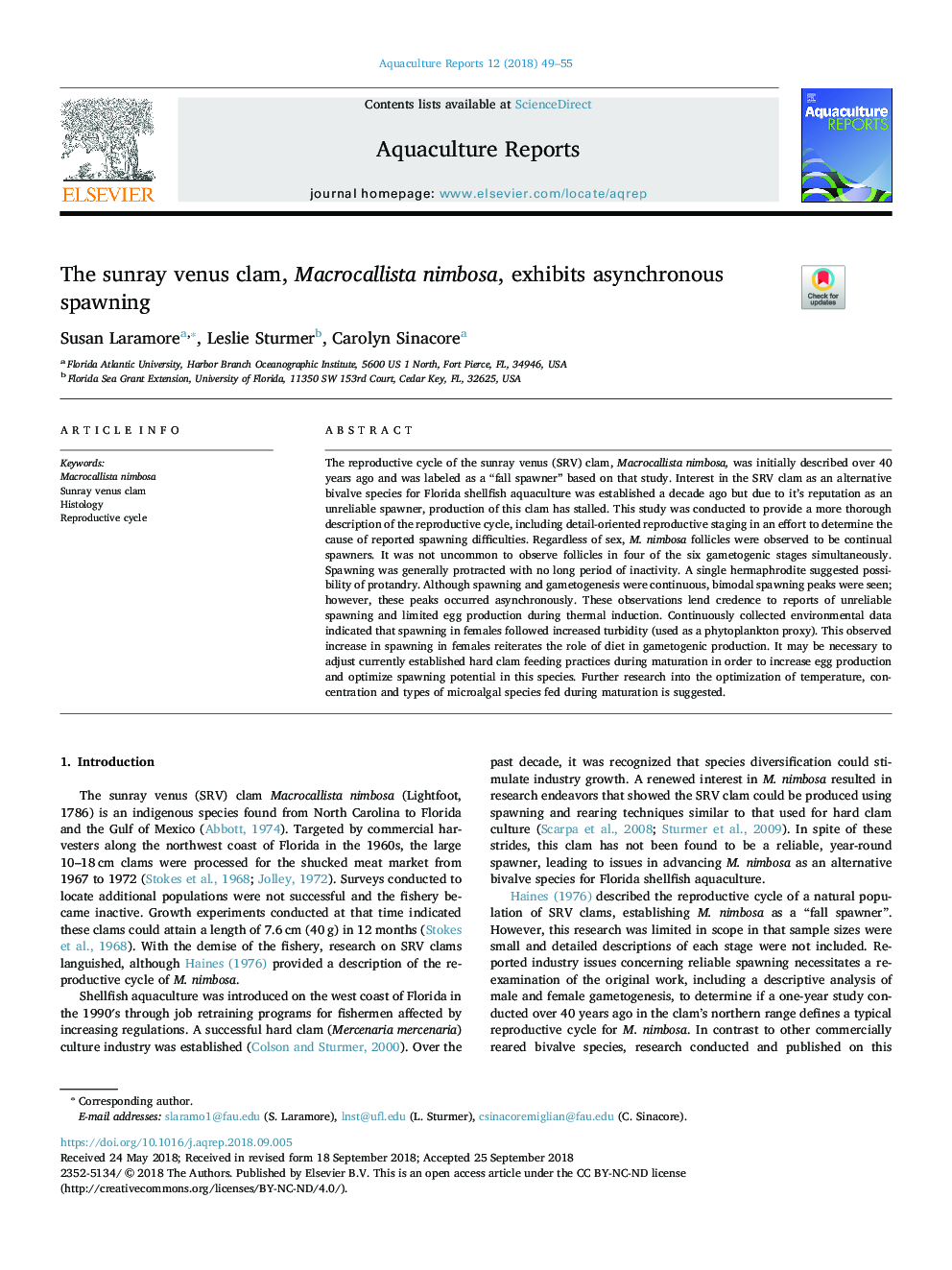| Article ID | Journal | Published Year | Pages | File Type |
|---|---|---|---|---|
| 11030418 | Aquaculture Reports | 2018 | 7 Pages |
Abstract
The reproductive cycle of the sunray venus (SRV) clam, Macrocallista nimbosa, was initially described over 40 years ago and was labeled as a “fall spawner” based on that study. Interest in the SRV clam as an alternative bivalve species for Florida shellfish aquaculture was established a decade ago but due to it's reputation as an unreliable spawner, production of this clam has stalled. This study was conducted to provide a more thorough description of the reproductive cycle, including detail-oriented reproductive staging in an effort to determine the cause of reported spawning difficulties. Regardless of sex, M. nimbosa follicles were observed to be continual spawners. It was not uncommon to observe follicles in four of the six gametogenic stages simultaneously. Spawning was generally protracted with no long period of inactivity. A single hermaphrodite suggested possibility of protandry. Although spawning and gametogenesis were continuous, bimodal spawning peaks were seen; however, these peaks occurred asynchronously. These observations lend credence to reports of unreliable spawning and limited egg production during thermal induction. Continuously collected environmental data indicated that spawning in females followed increased turbidity (used as a phytoplankton proxy). This observed increase in spawning in females reiterates the role of diet in gametogenic production. It may be necessary to adjust currently established hard clam feeding practices during maturation in order to increase egg production and optimize spawning potential in this species. Further research into the optimization of temperature, concentration and types of microalgal species fed during maturation is suggested.
Keywords
Related Topics
Life Sciences
Agricultural and Biological Sciences
Animal Science and Zoology
Authors
Susan Laramore, Leslie Sturmer, Carolyn Sinacore,
